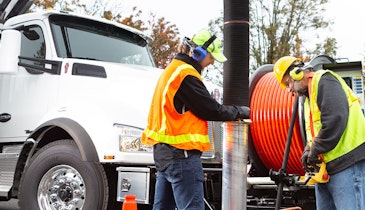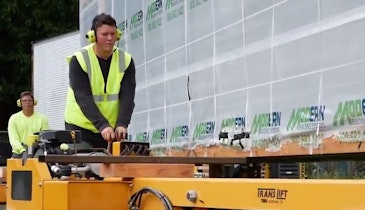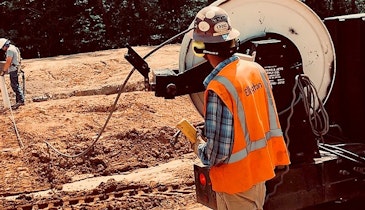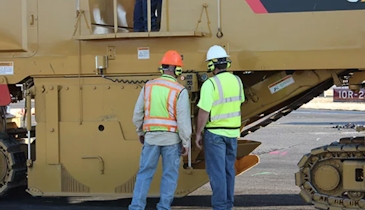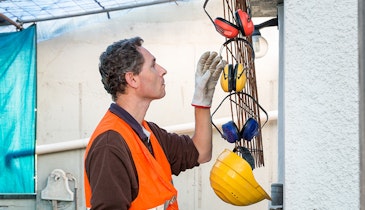Every drilling project presents a unique set of challenges. In order to effectively deal with changing site conditions, maintain safety and meet deadlines, drilling crews must communicate in real time. Without it, delays and misunderstandings can lead to mistakes and accidents.
Communication vs. hearing protection
Communicating on a job site involves two opposing needs: being able to communicate properly, and protecting ears from the noise of dangerously loud equipment. There are a number of partial solutions that address only half of this dilemma.
Partial solutions
Hearing protectors like earmuffs or earplugs block out noise, but make it impossible to communicate effectively. Removing hearing protection to enable communication can lead to hearing damage.
Communicating with hand signals can be easily misinterpreted and is dependent on line of sight, which is difficult to achieve around equipment and traffic. Meanwhile, continued shouting is stressful and fails if it isn’t heard.
Two-way radios require removing your hand from controls to press and hold the push-to-talk button. Cellphone use distracts operators when their eyes move away from gauges and attention wanders from the task at hand.
None of these traditional communication methods provide hearing protection for crew members in high-noise environments.
What about shutting down loud equipment? This solves noise and communication problems when workers are close by. However, distance remains a limiting factor. Also, frequent work stoppages lower productivity, efficiency, and increase wear and tear on machinery.
It’s a catch-22 scenario: How can operators and locators communicate clearly while wearing effective hearing protection?
Benefits of integrated wireless communication
Sonetics’ portable wireless communication systems combine hands-free, full-duplex communication with advanced hearing protection to let drilling crews communicate clearly and easily while protecting their hearing.
The Sonetics DECT7 provides instant, simultaneous two-way communication — just like a mobile conference call — for crews of up to 20. The voice microphone is continuously live with no need to press and hold a push-to-talk button. Noise cancellation technology and automatic adjustments prevent background sound from being heard by other team members.
Both the headsets and the portable ComHub are wireless, allowing crews to move freely around the work zone without being tethered to equipment. Components are battery operated and provide up to 24 hours of talk time.
With a 24 dB noise-reduction rating, Sonetics wireless headsets lower all outside sound to safe levels, preventing hearing damage and the risk of permanent hearing loss.
Many workers refuse to wear effective hearing protection due to fear of isolation. Sonetics wireless headsets feature stereo listen-through microphones, providing users with situational awareness and hearing protection at the same time by combining outside sound with voice communication.
“Drilling contractors are looking for every advantage to help them deliver the highest quality results on or ahead of schedule,” says Julie Steding, Sonetics marketing manager. “Sonetics’ unique combination of hands-free, wireless communication and hearing protection helps crews be more productive, operate at a higher level of safety and reduce the stress that comes with daily high-noise exposure.”
Sonetics Corp. creates wireless communication solutions that enable natural conversation in challenging environments. Building on a platform of collaboration and rugged performance, Sonetics’ team communication systems deliver a work experience that is productive, safe and enjoyable. With 35 years’ experience, Sonetics Corp. and its Sonetics, Flightcom and Firecom product brands deliver innovative solutions to customers, transforming the way they work.
800-833-4558 | sales@soneticscorp.com | www.soneticscorp.com
